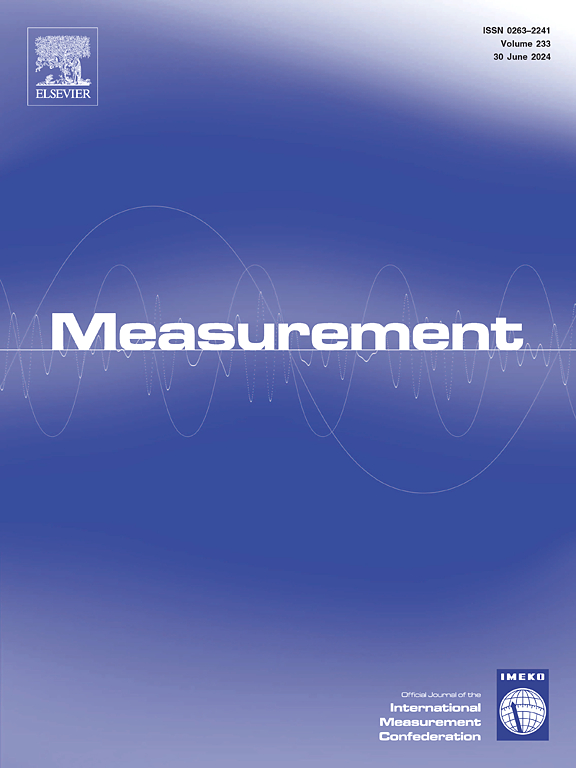Enhanced TDLAS detection of high-temperature water vapor using neural network-optimized spectral denoising
IF 5.6
2区 工程技术
Q1 ENGINEERING, MULTIDISCIPLINARY
引用次数: 0
Abstract
Real-time monitoring of atmospheric water vapor concentrations is critical for combustion optimisation and emission control in high-temperature industrial processes. However, traditional spectroscopic techniques frequently encounter substantial noise interference, thereby impeding the precision of measurements when operating in extreme conditions. This study proposes a novel feedforward neural network (FNN)-assisted Savitzky-Golay collaborative filtering algorithm for noise suppression in tunable diode laser absorption spectroscopy (TDLAS). The proposed method integrates the nonlinear learning capability of FNN with the adaptive smoothing advantages of S-G filtering, achieving superior denoising performance compared to conventional single-filter approaches. Experimental validation using HITEMP-simulated spectra demonstrates a remarkable signal-to-noise ratio (SNR) enhancement from 20.93 dB to 46.60 dB, representing a 25.66 dB improvement 6.25 dB superior to optimal traditional filtering methods. Field tests conducted in a 1010 °C blackbody furnace environment revealed a concentration measurement standard deviation of 17.29 ppm, with Allan deviation analysis confirming a detection sensitivity of 2.2 ppm at 99 s integration time. The system exhibits excellent linear response (R2 = 0.97) across 600 continuous measurements, achieving a mean absolute error of 22.46 ppm compared to reference values. This breakthrough in spectral processing technology enables reliable water vapor monitoring under challenging high-temperature conditions, significantly improving process control capabilities in metallurgical and energy-intensive industries.
利用神经网络优化的光谱去噪增强TDLAS对高温水蒸气的检测
在高温工业过程中,大气水蒸气浓度的实时监测对燃烧优化和排放控制至关重要。然而,传统的光谱技术经常遇到大量的噪声干扰,从而阻碍了在极端条件下的测量精度。提出了一种新的前馈神经网络(FNN)辅助Savitzky-Golay协同滤波算法,用于可调谐二极管激光吸收光谱(TDLAS)的噪声抑制。该方法将FNN的非线性学习能力与S-G滤波的自适应平滑优势相结合,与传统的单滤波方法相比,具有更好的去噪性能。实验验证表明,该方法的信噪比(SNR)显著提高,从20.93 dB提高到46.60 dB,比最优传统滤波方法提高了25.66 dB。在1010°C黑体炉环境中进行的现场测试显示,浓度测量标准偏差为17.29 ppm, Allan偏差分析证实,在99 s积分时间内,检测灵敏度为2.2 ppm。该系统在600次连续测量中表现出良好的线性响应(R2 = 0.97),与参考值相比,平均绝对误差为22.46 ppm。这一光谱处理技术的突破使在具有挑战性的高温条件下可靠的水蒸气监测成为可能,显著提高了冶金和能源密集型行业的过程控制能力。
本文章由计算机程序翻译,如有差异,请以英文原文为准。
求助全文
约1分钟内获得全文
求助全文
来源期刊

Measurement
工程技术-工程:综合
CiteScore
10.20
自引率
12.50%
发文量
1589
审稿时长
12.1 months
期刊介绍:
Contributions are invited on novel achievements in all fields of measurement and instrumentation science and technology. Authors are encouraged to submit novel material, whose ultimate goal is an advancement in the state of the art of: measurement and metrology fundamentals, sensors, measurement instruments, measurement and estimation techniques, measurement data processing and fusion algorithms, evaluation procedures and methodologies for plants and industrial processes, performance analysis of systems, processes and algorithms, mathematical models for measurement-oriented purposes, distributed measurement systems in a connected world.
 求助内容:
求助内容: 应助结果提醒方式:
应助结果提醒方式:


